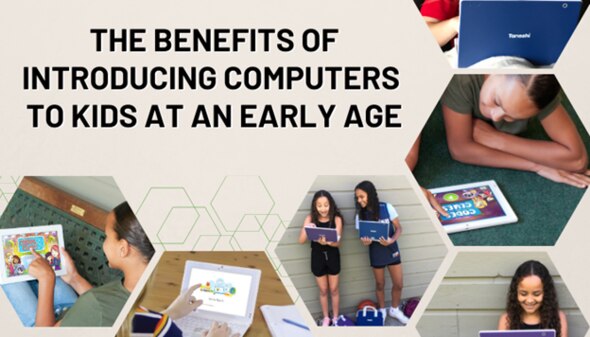Life Skills You Need to Teach to Your Children
In an era of constant transformation, providing our children with the necessary resources to maneuver through life confidently is imperative. Imparting life skills to our youth is a crucial element of preparing them for the future, as these proficiencies not only facilitate their personal growth but also lay the foundation for success in adulthood.
Below we’ll discuss six crucial life skills that every parent should be teaching their children:
Communication Skills
One way to ensure your child’s success in their personal and professional life is to teach them how to express themselves clearly and listen actively. To help your child develop strong communication skills, here are some tips.
Encourage open conversation
Establish a welcoming atmosphere at home to help your child feel comfortable sharing their thoughts and feelings. Practice active listening and respond thoughtfully to encourage ongoing discussions.
Teach empathy
Encourage your child to be mindful of how their words and actions impact others. Help them understand the significance of considering other people’s feelings and perspectives.
Develop non-verbal communication skills
It is essential to teach your child how body language, facial expressions, and tone of voice can help them convey their message effectively.
Practice public speaking
You can help boost your child’s confidence in public speaking by motivating them to join school debates, presentations, or drama clubs.
Time Management Skills
Effectively managing time is an essential skill for success in all areas of life. Instilling time management skills in your child early will equip them with the ability to organize, remain focused and ultimately become more productive. To achieve this, consider establishing a daily routine for your child, like making their bed, doing their homework, and finishing their chores.
This approach will provide them with a framework, allowing them to develop structure and a sense of prioritization.
It is recommended to motivate your children to create objectives that are both short-term and long-term in nature. In addition, instructing them on the significance of dividing seemingly impossible tasks into more manageable fragments is equally essential.
You should assist your child in effectively arranging their schedules and obligations using a planner or calendar. Incorporating this practice will aid in imparting crucial time-management skills and discourage procrastination.
Financial Literacy Skills
The importance of money management in the lives of many adults cannot be overstated. The basic concepts are currency and the responsible earning, saving, and spending of money. By imparting these essential skills to your child, you are setting them up for financial success in the future. To give them a foundation for financial security and independence, it is crucial to teach your child financial literacy early on.
Assist your child in developing a manageable budget to monitor their earnings (such as their allowance) and payments (like snacks or toys). Encourage them to save for substantial purchases and educate them on living within their financial limits.
Take the initiative to open a savings account for your child and teach them the value of saving money and generating interest. As they mature, engage them in discussions regarding credit responsibility and the adverse effects of accumulating debt.
Responsibility and Accountability Skills
Teaching your children responsibility and accountability is crucial in helping them grow into responsible adults. Start by assigning age-appropriate chores and tasks they can complete independently. This will help them understand that they have a role in the family and that their actions have consequences. You can also teach them the importance of caring for their belongings, by modeling proper behavior and having a plan if an item breaks.
Inspiring your children to assume responsibility for their missteps and take lessons from them is vital. It instills a sense of liability in them for their actions. You can achieve this by discussing the repercussions of their inaction, such as forgetting to do a chore and aiding them in exploring ways to compensate for it.

Image Source: Pexels
Problem-Solving and Critical Thinking Skills
It is essential that children possess problem-solving and critical thinking abilities to overcome obstacles and make sound judgments. Foster curiosity and critical reasoning in your children about the surrounding environment. Offer them the chance to solve problems autonomously, even if they face initial difficulties.
Engaging your kids in activities involving problem-solving and critical thinking, such as board games, puzzles, or brainstorming sessions, can help them develop these crucial skills faster and give them a chance for a valuable family bonding experience.
Home Safety and Household Skills
Instructing children in home safety skills is paramount as it equips them with the necessary tools to respond appropriately in emergencies and recognize potential dangers within their surroundings. To illustrate, parents can showcase the significance of home safety by childproofing the household before the arrival of a new baby and elaborating on the rationale behind each precaution. Show your child the importance of keeping baby gates closed, securing rugs, and not leaving choking hazards out in order to protect the new baby. Many of these safety precautions will also keep your child safe as well.
Apart from ensuring child safety at home, imparting essential household skills like cooking, cleaning, and maintenance to children is crucial. These proficiencies will aid them in becoming more independent and promote a healthy lifestyle. The recommended approach would be to teach age-appropriate duties, gradually escalating the complexity as they mature.
Prepare Your Children For The Stage of Their Lives
Parenting is challenging, but equipping your children with the necessary life skills is crucial for their success. To prepare them to face life’s challenges, you should teach them time management, financial aptitude, accountability, problem-solving skills, critical thinking, home safety, and household management.
By doing so, you can ensure that your child is ready to tackle any hurdle in every stage of their life. These fundamental abilities will shape their character, making them self-sufficient and confident in dealing with life’s challenges.
About the Author
 Katie Brenneman is a passionate writer specializing in education, mental health, family lifestyle and online safety. When she isn’t writing, you can find her with her nose buried in a book or hiking with her dog, Charlie. You can follow her on Twitter.
Katie Brenneman is a passionate writer specializing in education, mental health, family lifestyle and online safety. When she isn’t writing, you can find her with her nose buried in a book or hiking with her dog, Charlie. You can follow her on Twitter.









